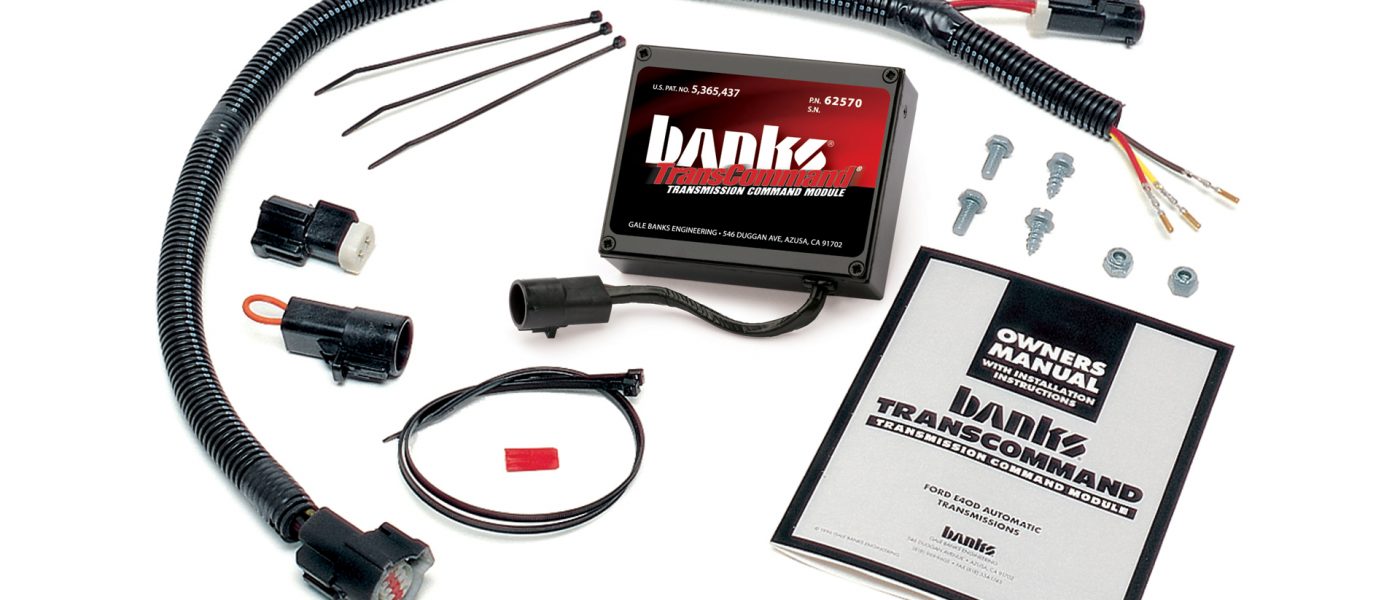1990 Banks Introduces TransCommand
In the past few decades, pickups and SUVs have not only become socially acceptable, they are in fact the norm. So much so that GM and Ford have dropped cars and sedans from their lineup and instead have turned their efforts to making a fleet of small to large SUVs and trucks. As a result, trucks and SUVs have become less utilitarian and more “car-like.” This transition has included softer suspension, interiors that are more luxurious, numerous creature comforts, and automatic transmissions that have soft, unobtrusive shifts.
The “shift” to comfort began for Ford’s transmissions around 1989. In an effort to please their customers, Ford designed their light truck transmissions and control systems to provide smooth, car-like shifts. It was the quality of these automatic transmission shifts, particularly in the E40D that Ford had used in light trucks, vans, and motorhome chassis from ’89, and later, beginning in ’99, the 4R100, that became a concern. While some people found the softer shifting to be pleasing, others have complained that the shifts were mushy, lazy, loose or slippery. The car-like shifts from these truck transmissions were accomplished by reducing the hydraulic line pressure in the transmission, which in turn slowed the speed of the shifts and allowed some slippage to soften the transition from one gear to the next. While this tactic resulted in velvet-smooth shifts, it did nothing good for the automatic transmission, and in fact, Ford had substantial warranty exposure from both of these transmissions. Slippage during the shifts is hard on the clutch packs and it increases the transmission fluid temperature – the biggest enemy of an automatic transmission. The harder the vehicle was driven, the more the transmission slipped on shifts. The problem was further aggravated if the vehicle needed to haul or tow a heavy load, such as an RV. Heavy motorhome chassis that used the Ford automatic had the same problem.

The solution to the problem then (and now when used with those older transmissions) was the Banks TransCommand, an automatic transmission management computer that over layed the stock EEC control of hydraulic line pressure. The TransCommand also monitored the throttle position and vehicle speed to sense vehicle load, progressively increasing line pressure above that signaled by the EEC up to the maximum Ford specification of 190 PSI. Pressure was never increased beyond the Ford spec or beyond the capacity of the transmission pump, protecting the pump and the transmission seals. Essentially, the TransCommand accelerated the rate at which line pressure was increased. The more the EEC increased the pressure, the more the TransCommand added pressure until maximum pressure was attained. At increased pressure, clutch pack “slip time” was decreased. Light throttle shifts remained smooth and firm, while full-throttle or heavily loaded shifts were solid and decisive. The line pressure was always proportional to the load to avoid any harsh or jarring shifts. Interestingly, when the “slip time” was decreased, the vehicle also accelerated faster, which was a side benefit of the TransCommand.
The Transcommand was so innovative that it was awarded a U.S. patent in 1994, and still remains a very popular product that is still sold to this day.

